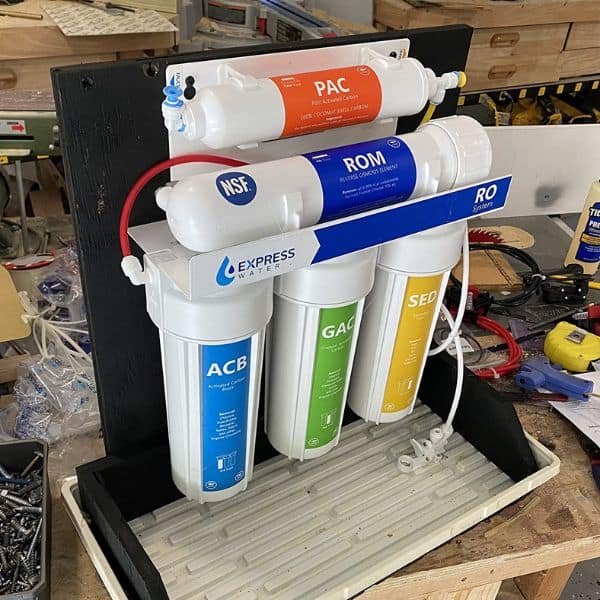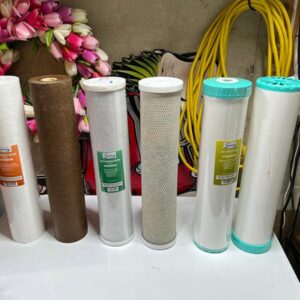How Should You Filter Well Water For Drinking
If you live in a rural area or somewhere with a private well, you may have concerns about the safety of your drinking water. While well water is generally considered safe and free from harmful chemicals, it can still contain bacteria and other organic contaminants that could make you sick. That’s why it’s important to know how to filter well water before drinking it. There are several different types of filters for well water, including:
- Activated Carbon Filters
- Reverse Osmosis Systems
- UV Sterilizers
Activated carbon filters are the most common type used in homes because they’re affordable and effective at removing impurities like pesticides and chlorine. Reverse osmosis systems use a membrane to remove minerals and particles from the water, while UV sterilizers use ultraviolet light to kill bacteria and viruses. Here’s a list of the best well water filters that you can look over.
Activated Carbon Filters
Well water is an excellent and accessible source of drinking water, but it often contains impurities that can harm health. One of the most effective ways to remove these impurities is by using activated carbon filters. These filters trap and remove chemicals, minerals, and other contaminants from well water.
Activated carbon filters work by using adsorption, which involves attracting and binding molecules to the surface of the filter media. The filter media comprises small pieces of activated carbon treated with oxygen to create a porous surface area. This creates more space for impurities to adhere to the filter material, allowing for greater filtration capacity.
To ensure that your sink water filter is working effectively, following proper maintenance procedures is essential. This includes regularly replacing the filter media as the manufacturer recommends or when you notice a decrease in water quality.
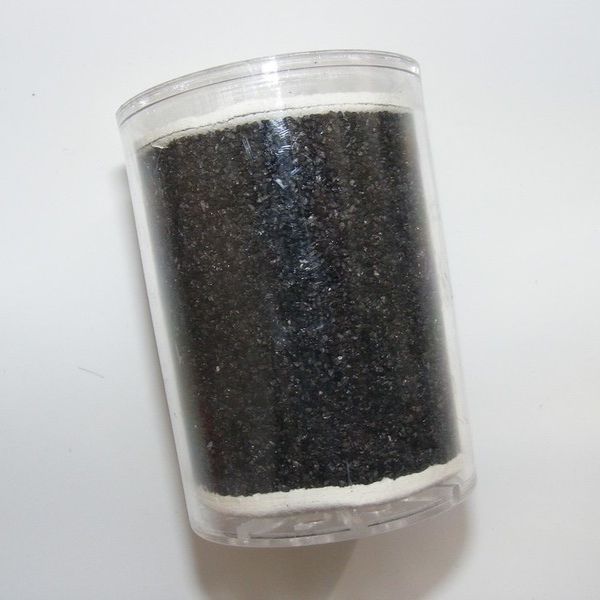
Reverse Osmosis Systems
Another effective way to remove impurities from well water is using a reverse osmosis system. Here’s what you need to know about how they work.
Reverse osmosis systems filter out contaminants by forcing water through a semi-permeable membrane that removes anything larger than its pores. This process effectively removes minerals, sediment, and other impurities from the water supply.
Reverse osmosis systems effectively remove up to 99% of unwanted contaminants from well water. They also help improve the taste and odor of your drinking water by removing any unpleasant flavors or smells associated with impurities in your well water source.
UV Sterilizers
Unlike other filtration methods, such as reverse osmosis or activated carbon filters, UV sterilizers use ultraviolet light to kill harmful bacteria and viruses in the water.
You’ll need to install the system properly to start filtering your well water with a UV sterilizer. Most systems come with detailed instructions for installation, but if you’re uncomfortable doing it yourself, consider hiring a professional plumber. Once installed, ensure the system is running correctly by regularly checking its indicator lights.
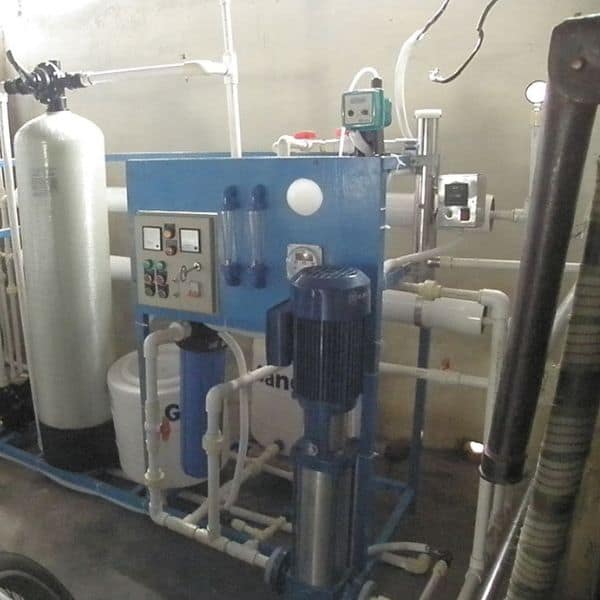
Testing Your Well Water
Testing your well water is essential in ensuring that you and your family drink safe, clean water. There are several methods for testing well water that can provide accurate results. The most common testing methods include laboratory analysis, do-it-yourself test kits, and hiring a professional to conduct the testing.
Laboratory analysis
Laboratory analysis provides accurate results on the quality of your well water. To begin laboratory analysis, you’ll need to collect a sample of your well water. Use a clean container with no traces of soap or detergent residues that could affect the accuracy of the test results.
When you have collected a sample, take it to an accredited laboratory for testing. Depending on their standard procedures, the laboratory will conduct tests such as pH levels, nitrate levels, and fecal coliform bacteria presence.
Once you have your test results, you can use them to determine the best water treatment method for your situation. You may also seek advice from a local professional certified in well water testing and treatment.
Do-it-yourself test kits
Another option is to test well water yourself using a do-it-yourself test kit. These kits are simple and affordable, allowing you to check your water for common contaminants without hiring a professional.
Before starting, purchase a well water testing kit with all the necessary components such as sample bottles, testing strips or tablets, and instructions. Follow the instructions carefully while collecting samples from different sources like faucets, spigots near your wellhead, or any other areas where water is used regularly.
Once collected, follow the instruction manual to conduct tests for various parameters like pH levels, nitrates, bacteria like E.coli, and coliforms in your well water. Make sure to read the results correctly per the guidelines before interpreting them.
Hiring a professional to conduct the testing
Homeowners can also hire a professional from their local health department to test well water. While it may be tempting to conduct the testing yourself, hiring a professional has several advantages. Professionals have access to specialized equipment and laboratory facilities to perform accurate and reliable tests.
In addition, professionals will be able to identify potential sources of contamination, such as nearby septic systems or agricultural activities that may be impacting your well water quality. A professional can also guide appropriate treatment options if any contaminants are identified.
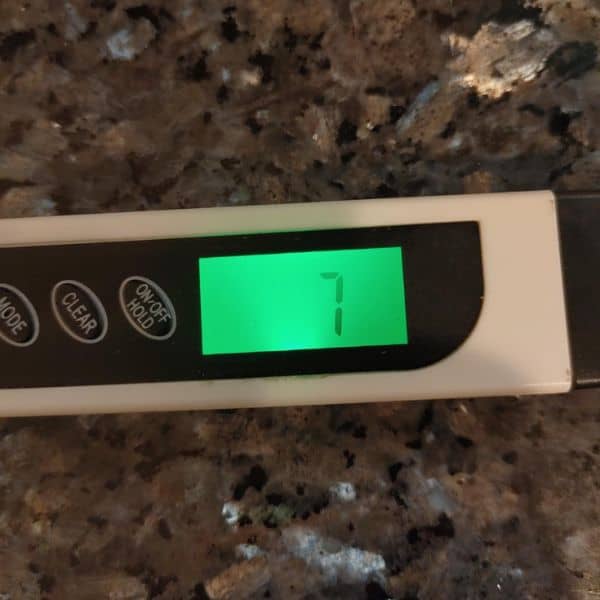
Common Contaminants in Well Water
Well water is considered one of the purest forms of drinking water, but it can still contain various contaminants that pose a risk to human health. These contaminants can seep into the well through natural or man-made sources and cause waterborne diseases such as cholera, hepatitis A, and typhoid fever.
Bacteria
One common contaminant in well water is bacteria. This microscopic organism can enter the well through animal waste or sewage runoff from nearby farms or septic systems. The presence of bacteria in well water can lead to digestive problems, skin infections, and other serious illnesses if left untreated. It’s important for people who rely on wells for their drinking water supply to test their waters regularly for bacterial contamination.
Nitrates
Another common contaminant in well water is nitrates. Nitrates are naturally occurring compounds found in fertilizers used in agriculture and lawn care practices that eventually find their way into groundwater supplies. Nitrates can cause severe illness in infants and young children who drink water containing high amounts of nitrates. Nitrate concentrations above the EPA Maximum Contaminant Level (MCL) of 10 mg/L are considered unsafe for drinking.
Heavy metals
Heavy metals such as lead, mercury, cadmium, arsenic, and chromium cause serious health problems when consumed in high concentrations. These metals can accumulate in the body over time and cause long-term health effects such as neurological damage, cancer, kidney damage or failure, and liver damage or failure.
The presence of heavy metals in well water is often due to natural sources such as rock formations or human activities like agricultural practices and industrial processes. It is important for homeowners who rely on well water to have their wells tested regularly for heavy metal contamination by certified professionals.
Iron
Iron is naturally present in soil and rocks and finds its way into groundwater as rainwater seeps through the ground. When excess iron accumulates in well water, it gives off a metallic taste and reddish-brown stains on surfaces such as sinks, toilets, and laundry appliances.
Although iron is not considered a health hazard when consumed in small quantities, high iron intake can cause serious health problems. Iron-rich drinking water may lead to stomach discomforts such as nausea or diarrhea. It can also cause liver damage if ingested over prolonged periods.
VOCs
The most common VOCs in well water include benzene, toluene, and xylene. Benzene is a carcinogen that can cause leukemia and other types of cancer. Toluene can cause headaches, dizziness, and nausea, while Xylene has been linked to neurological disorders such as tremors.
It’s important for homeowners who rely on well water to have their water tested regularly for VOCs. If VOCs are detected, treatment options like activated carbon filters or reverse osmosis systems may be recommended by professionals. If homeowners already have a well water filtration system, they should replace the filter that is the cause of contaminated water.
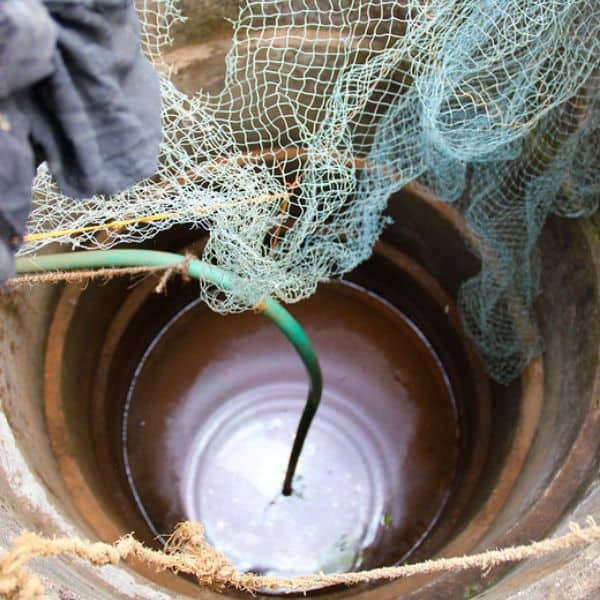
How Contaminants Reach Well Water
Well water is extracted from the ground and is often considered clean, pure, and contaminant-free. However, this is only sometimes the case as well water can be easily contaminated by different sources.
Water run-off
Water run-off can have a significant impact on the quality of well water. As rainwater or snowmelt travels over the ground’s surface, it can pick up pollutants and contaminants. These contaminants can include chemicals from agricultural fertilizers, pesticides, herbicides used in landscaping practices, sediment, and bacteria.
Once these pollutants enter our water sources through run-off, they can enter wells that supply drinking water to households. This particularly concerns those relying on private wells for their water supply. To ensure that your well water is safe to consume, it’s important to test your well for contaminants regularly.
Leakage of waste
Contaminants can also reach well water through the leakage of waste. Waste can come from many sources, including agricultural and industrial activities, landfills, and sewage treatment plants. When waste is not properly managed or disposed of, it can seep into the ground and eventually make its way into well water supplies.
One major concern with contaminated well water is its potential health risks to those who consume it. Contaminants such as bacteria, viruses, parasites, and chemicals can cause various illnesses, from diarrhea to cancer. Additionally, contaminated well water can negatively impact the environment by harming wildlife and aquatic ecosystems.
It is important to implement proper waste management practices to prevent contaminants from reaching well water through waste leakage.
How to Reduce the Risk of Well Water Contamination
Well water contamination can pose a serious threat to the health of you and your family. Bacteria, viruses, and chemicals can all find their way into your well water supply, potentially causing illness or disease. Fortunately, you can take steps to reduce the risk of well water contamination.
Test well water
Firstly, having your well water tested regularly by a professional laboratory is important. This will help you identify any potential contaminants in your water supply and take appropriate action to address them.
Ensure the well is constructed according to local regulations
Ensure your well is properly constructed and maintained according to local regulations.
Avoid hazardous activities near the well
Another key step in reducing the risk of well water contamination is avoiding hazardous activities near the wellhead. This includes refraining from storing chemicals or fuel near the well or conducting any construction work nearby that could damage it.
FAQs
Should you filter well water for drinking?
The safety and quality of well water can vary depending on factors such as geographic location, well depth, and the presence of contaminants in the surrounding environment. As a result, it’s essential to consider whether or not you should filter your well water before drinking.
Filtering well water can remove harmful contaminants and improve its taste and odor. Well water may contain various pollutants such as bacteria, viruses, pesticides, and heavy metals like lead and arsenic, posing health risks to individuals with weakened immune systems or pre-existing health conditions such as cancer or liver damage. Filtering helps eliminate these contaminants by trapping them in activated carbon filters or reverse osmosis membranes. You can also use a water softener to purify water.
Is well water safe to drink?
Well water safety largely depends on where the well is located and how it’s constructed. A properly constructed and maintained well should be protected from surface contaminants such as bacteria, viruses, and chemicals that can seep into the ground.
However, suppose a well is not properly maintained or located too close to septic systems or agricultural fields where pesticides and fertilizers are used. In that case, contaminants may find their way into the groundwater source.
Does well depth affect water quality?
Well depth is a critical factor in determining water quality from a well. The deeper the well, the higher the chances of accessing clean and uncontaminated water. Shallow wells are more susceptible to contamination from pesticides, fertilizers, and other chemicals used on nearby farms or gardens. Additionally, shallow wells may be more likely to pick up bacteria or viruses from septic systems or animal waste.
However, it’s important to note that even deep wells can be subject to contamination if they are not properly maintained or located near potential sources of pollution. Regular well water testing and monitoring is crucial for ensuring its safety and quality over time.
What is the best method to filter well water?
The most effective method for filtering well water largely depends on the type of contaminants present. A sediment filter can remove sand, silt, and other suspended particles from the water.
Activated carbon filters can remove chlorine, volatile organic compounds (VOCs), pesticides, herbicides, and bad odors or tastes from the water. Reverse osmosis systems can remove dissolved minerals like arsenic or lead that cannot be eliminated through activated carbon filters.
Is it safe to shower in a well water supply?
Well water can be contaminated with various bacteria, viruses, and other harmful substances such as pesticides and chemicals. These contaminants can enter the body through ingestion or skin contact during showering.
However, most well water supplies are treated with filters or other disinfectants to kill off any harmful bacteria and viruses that may be present in the water. This treatment process helps ensure the well water is safe even when showering.
Conclusion
Filtering well water to make it safe for drinking is an important step in protecting your health and your family’s health. Homeowners can use well water filters such as activated carbon filters, reverse osmosis systems, and UV sterilizers to filter out harmful contaminants and make the water safe for drinking.
Additionally, having your well water tested regularly for contaminants can provide peace of mind that the water is safe for consumption.
